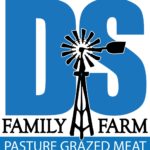Worried about what you are "really" eating? Have peace of mind with pasture grazed meats.
Rx (prescribed) burn
In a previous post we described the battle we are in against the native eastern red cedar tree. Keeping cedar trees in check one-by-one is a challenge. Two alternatives to mechanical cutting cedars includes grazing goats (eat brush/trees) and using fire. Obviously fire has some risk involved and grazing goats takes a new level of management. Below we describe the very basic principles of a prescribed burn recently completed. (Rather not read about the burn? Just watch the video on our YouTube channel.)
Burn Objectives
For the recent burn completed our objectives were to remove accumulated dead grass vegetation over the past 10 years. The grass thatch was not beneficial for our target wildlife species of prairie birds and game birds. In addition cedar trees were invading the site. Finally the burn will prepare the site for a future pollinator seeding and grazing alternatives.

The Burn Prescription
- Weather
- Obviously wind direction/speed must be considered along with air temperature and relative humidity. No major shifts in weather should be in the forecast while conducting a burn. Weather parameters can vary depending on the ignition technique, i.e. back fire versus head fire.
- Fuel type
- Vegetation type and amount will dictate the flame height and intensity.
- Topography
- Fire will RUN FAST UP HILL and slow down traveling down a hill.
- Site preparation
- Fire guards/breaks are developed prior to the burn. Mowing, removing fuel (grazing) and constructing a bare soil or green fire break are all options.
- Ignition techniques
- Fire behavior can be managed by using back fires, flank fires, strip fires and head fires. Knowing the characteristics of each are important.
- Smoke management
- Smoke can be dangerous when placed over roads!
- Personnel
- One person, a fire boss must be assigned. All people involved need to know the site and be familiar with escape routes and equipment being used.
Burn Plan Map

As you review the Burn Plan Map can you pick out these variables? Must have a south wind to keep smoke off a busy U.S. Highway. Our house, located east of the burn site, will be an access point as well as a water source. Based on elevation change, fire will run fast from west to east (up hill) and travel slower from east to west (down hill). With a south wind, fire will travel quickly from the the south (bottom of the map) to north (top of map). The red dotted perimeter of the burn has been mowed and a mineral soil (tilled) fire break has been installed.
Burn Narrative
Fire ignition begins in the top right corner of the planned site. Both teams are located as “A1” and “B1” near the ignition site to observe fire behavior before allowing the burn to proceed. The ignited fire will travel slowly to the south (into the wind) and slowly to the west (down the hill). Team A then progresses from location A1 location A2 while Team B stays near the ignition location moving slowly to position B2. Team A is lighting the back fire, a low flame fire burning slowly into the wind, creating a safe black area along the north side of the site. As Team A approaches the far north west corner of the site (A3), Team B should be approaching the far south east corner (B3). At this point there should be a wide burned/black area along the north edge of the site. Both crews should stop and ensure that the back fire along the north edge of the burn is safely “wide” before proceeding. As Team B moves from location B3 to B4 the head fire will be ignited and the wind will carry the flames into the slowly approaching back fire. Both teams end up in the south west corner of the site as the fire puts itself out (fire runs into fire).

Burn video
We have posted a little under 8 minute video that further describes this burn plan along with photos and video from the actual burn. Watch or advance to the end of the video to view a 30 second time lapse recording of the entire burn.
Burn Results
The overall objectives of the burn were met! Dead vegetation thatch was removed and cedar trees were controlled. Most importantly, everyone stayed safe. Compare the photo below to the photo near the begging of this blog post (Before Burn versus After Burn).

For more information on conducting a prescribed burn visit a local USDA NRCS Office and check out the following link from UN-L:




